
Should You Get a Flu Shot?
“Safe and effective.”
“The single most effective way to prevent influenza.”
“The flu vaccine cannot cause infection of the flu.”
Have you heard these sound bites before? Medical professionals, friends on social media, local news anchors, your neighbors, and government authorities repeat the mantra that vaccines are safe and effective. But is the flu vaccine really as safe as everyone claims?
This article will outline major ingredients and issues associated with flu vaccines so that you can best decide whether or not to get a flu shot.
Recommendations:
The CDC recommends that individuals 6 months and older receive an age appropriate annual influenza vaccination. Individuals who have no previous influenza vaccination and are between the ages of 6 months through 8 years old are recommended to receive two doses more than 4 weeks apart (1).
The effectiveness of the vaccine is known to lessen with age. For this reason, a high dose vaccine and an adjuvanted flu vaccine is specifically designed for people 65 years and older (2, 34).
Vaccination recommendations for the 2019-2020 influenza season include inactivated, recombinant, and live attenuated influenza vaccinations (3, 4). These types of vaccines will be addressed throughout this article.

What the Vaccine Manufacturers Tell Us:
When is the last time that you read a vaccine package insert or discussed your unique risks and benefits with your doctor? Or was the lure of a $10 gift card to your local pharmacy or a free movie ticket on behalf of your employer so attractive that you didn’t even realize you were getting an experimental pharmaceutical drug?
Reading a package insert, written by the vaccine manufacturer and approved by the FDA, is enough to cast doubt on the safety of vaccines. The following precautions and known adverse reactions are listed on inserts for currently approved and marketed influenza vaccines (1, 5, 35):
Contraindications:
- History of anaphylaxis to any component in a vaccine (ie. egg protein, yeast, etc.) or severe allergy following the administration of any influenza vaccine or other related vaccine with components such as hepatitis B.
Warnings:
- Consideration before vaccination should be given if an individual has experienced Guillain-Barré syndrome within 6 weeks of prior influenza vaccination.
- Fainting from injections can occur.
- Apnea has occurred in infants born prematurely.
The Most Common Adverse Reactions:
- Muscular aches and/or myalgia, headache
- Pain and redness at the injection site
- Fever, diarrhea
- Irritability
- Loss of appetite or change in eating habits
- Drowsiness, fatigue, and weakness
- Arthralgia (joint pain)
- Induration (localized hardening of soft tissue)
- Gastrointestinal symptoms
- Rhinitis (symptoms may include sneezing, stuffiness or runny nose)
Note that the reactions listed above are only the “most common” occurrences in short term clinical trials conducted by the vaccine manufacturer. How did we ever allow the fox to guard the henhouse?
What rare or extreme reactions occurred? What other side effects have the study discarded? How many people (who may have experienced notable side effects) dropped out of the study, and therefore were not included in the statistics?
The manipulation of data and “scientific analysis” is a major issue and poses health risks to the public (6, 7).
What about Pregnant and Nursing Women?
You will find this or a comparable statement listed on vaccine inserts:
“[Vaccine name] has not been evaluated for its carcinogenic or mutagenic potential, or its potential to impair fertility.” (5)
Chilling, isn’t it?
The toxicity and its effects on a growing fetus is unknown. It is also unknown whether a vaccine’s toxic components are excreted in breast milk and what effect this may have on a newborn’s development. Despite all this, pregnant and nursing women are still encouraged to receive their annual flu shot.
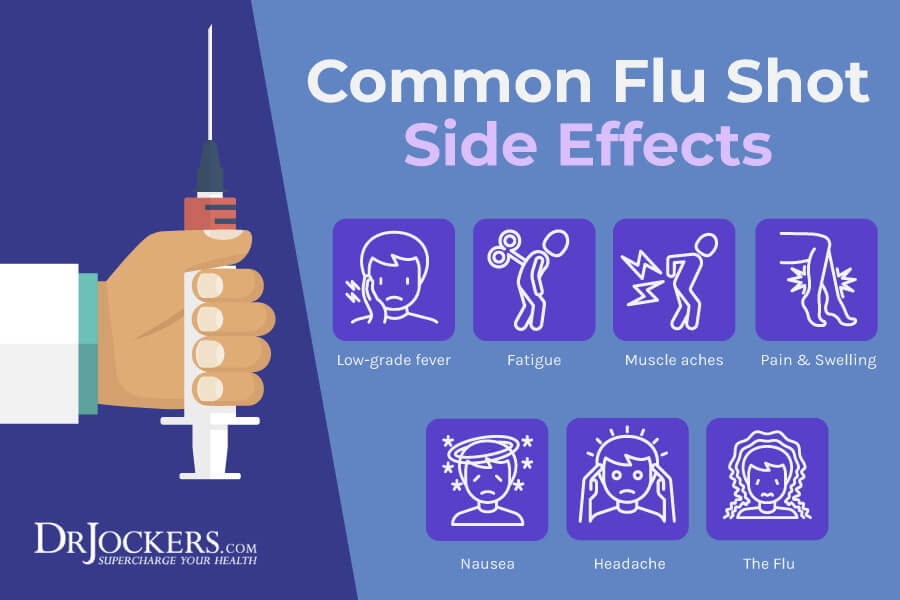
Understanding the Components of Vaccines:
Ingredients can differ between vaccines including types of viruses, presence and types of adjuvant(s), and the incubation material in which a virus is grown. This section will highlight key terms regarding vaccines and the possible complications associated with each.
Adjuvant: An ingredient added to a vaccine in order to stimulate a stronger immune response by boosting the antibody response of viral or bacterial antigens. (2) Adjuvants are known to be highly toxic, which is why they create a stimulatory immune response. Examples: Aluminum, thimerosal, formaldehyde, and MF59. (8, 36)
MF59: This is a water-in-oil adjuvant that can be found in the FLUAD vaccine recommended for the geriatric population but is also licensed for use in several other vaccines. MF59 contains squalene, polysorbate 80, and sorbitan trioleate (polysorbate 85). MF59 is currently undergoing trials. (11)
This begs the question: Shouldn’t this ingredient be tested before it is injected into thousands of people with already weakened immune systems?
Attenuated Virus: The CDC writes that a live attenuated virus (LAV) is a weakened live virus with the intent to stimulate an immune response without causing infection or severe side effects. (12)
History confirms that a LAV can in fact illicit severe health consequences. A paper published in 1994 by the IOM (Institutes of Medicine) noted the first reported case of infection from a LAV dates back to 1967. A two-year-old received a live attenuated measles vaccine and developed severe adverse effects including encephalopathy (brain inflammation). (14)
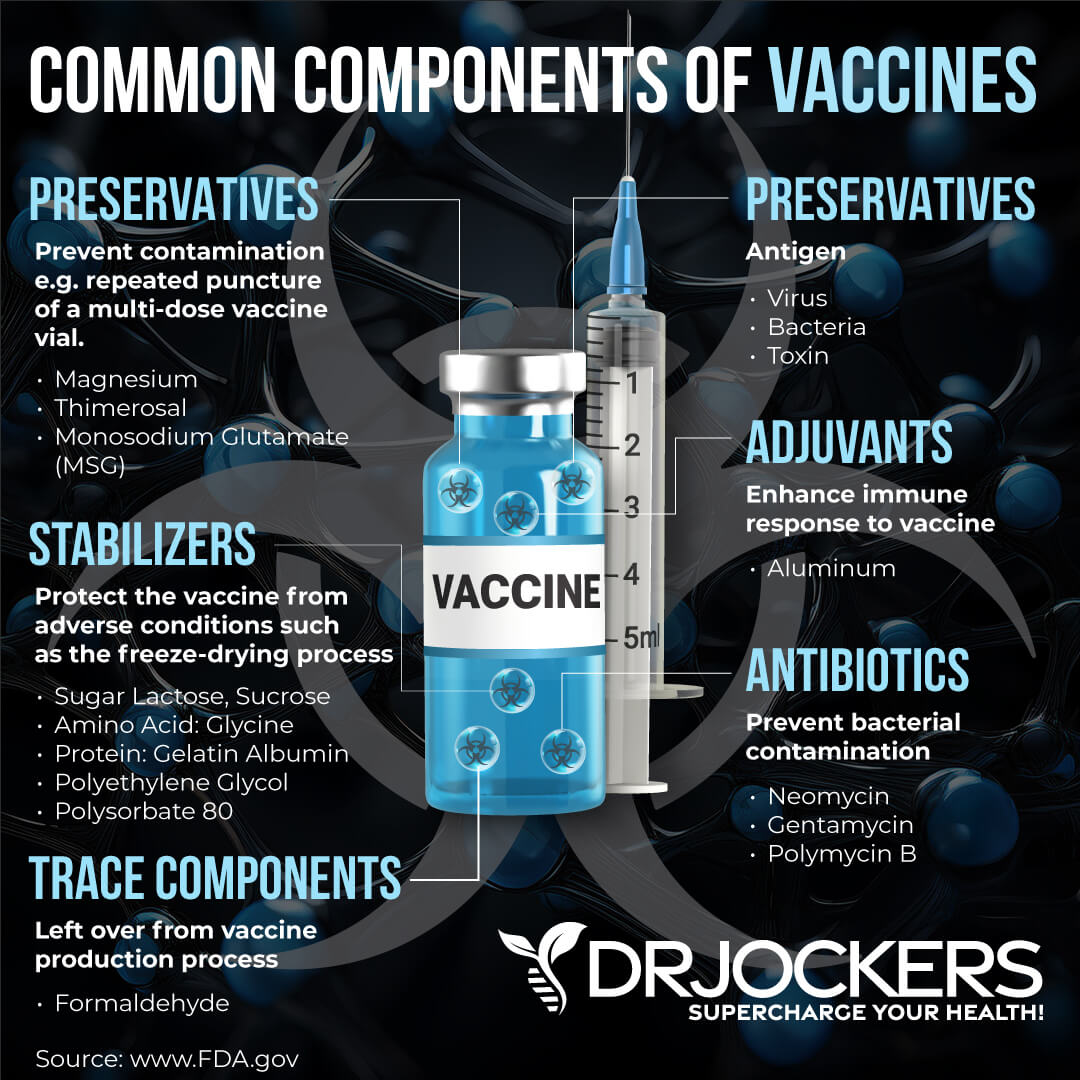
Problems with the Viral Attenuation Process:
How exactly is a virus weakened to reduce its pathogenic virulence?
Scientists admit that viral attenuation is challenging and has relied heavily on “trial and error”. The process is a “haphazard” methodology. It creates unpredictable mutations in the virus that can even produce a virulent strain. (22)
Despite improvements in the design, viral attenuation is a flawed process posing major areas of concern. Here are a few questions to consider regarding the un-tested risks of an annual flu shot:
- Could people who report getting the flu after the vaccine actually be contracting the influenza virus from the vaccine?
- Without knowing what quantities, exact strains, and contaminants are in vaccines, is it even possible to assess risks and benefits? What synergistic effects can occur from this toxic soup?
- What are the consequences of having multiple vaccines administered at the same time (especially on the pediatric schedule)? What new (recombinant) viruses are produced and what devastating potential can occur?
- How do vaccines affect our genes? Can these genetic influences be passed down to offspring?
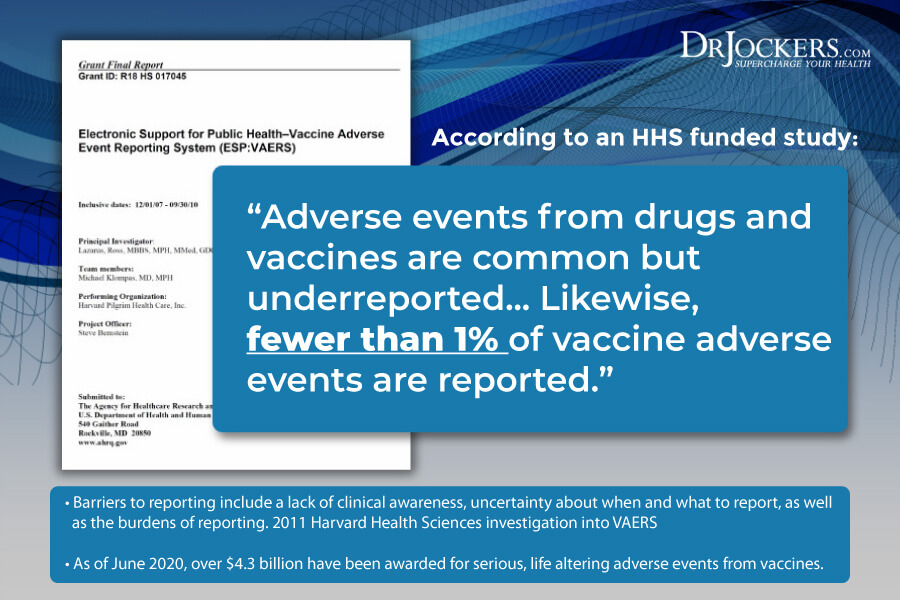
Incubation Medium for Growing Viruses:
Hen eggs: Many flu vaccines are manufactured using an egg-based incubation process. Egg embryos are injected with a viral solution and, after an incubation period, the suspension is removed. Despite the centrifugation process designed to remove contaminants, chicken blood, chicken proteins, and chicken remains are found in the flu shot. (14, 15, 16, 19)
Sadly, even individuals with known egg allergies are still recommended to receive a flu shot. If anaphylaxis in a child isn’t bad enough, these chicken remnants left behind in the flu vaccine contain pathogens such as the avian leukemia virus associated with common forms of breast cancer. (20)
Cell-Based: Cell-based flu vaccines contain influenza viruses grown in cultures containing mammalian cells instead of egg embryos. (17)
Animal cells used include Madin-Darby Canine Kidney (MDCK) cells. MDCK cells have the ability to divide infinite times making them cheaper than hen eggs, and easier to bank in the event of a flu pandemic. MDCK cells are also oncogenic (cancer-causing). (18)
As early as 1998 the FDA discussed the use of these tumor-causing cells for use in vaccines but concluded that they would limit its quantity. Currently, Flucelvax Quadrivalent is produced from dog cells and is an approved flu shot recommended in children starting at age 4. (17, 19)
Could vaccines be linked to pediatric cancer? (21)
Is it Effective?
To say that a flu shot is the single most effective way to prevent the flu you have to assume that the flu shot is effective.
To learn whether or not an influenza vaccine is effective, immunogenicity studies are performed. These studies look at how well the immune response is provoked in an individual by measuring antibody production (23, 17). Antibodies act as the immune system’s signal and attack system against foreign invaders.
We already know that some groups of individuals produce poor immune responses to standard dose vaccines which is why older age groups have high dose vaccines (24).
In the video below, Dr. Mark Geier explains why the flu vaccine is an “experiment on our lives and our children” (31). In summary, he explains the flu vaccine has not been tested for safety and efficacy for the following reasons:
- Double blinded field trials are not and cannot be performed on unknown and future circulating viruses.
- Strains for next year’s influenza vaccine are a guess.
- Antibody production in a group of people does not predict if a vaccine works.
- Short term evaluation studies are not sufficient timeframes for adequate analysis.
- The safety of repetitive influenza vaccination beginning when a fetus through old age cannot be performed and therefore cannot be deemed safe or effective.

Diminishing Effectiveness:
A 2015 study finds that individuals who received a flu shot in previous years have a decrease in effectiveness. Another unknown fact is that the measurement of vaccine effectiveness, in this study 43% for the 2015 influenza season, is only the measure of effectiveness in people who did not receive the previous year’s flu shots. (25)
This diminishing effect of vaccine effectiveness is comparable to findings in other studies as well. A study of 328 families totalling 1441 household members found that individuals vaccinated 2 previous years in a row had a -45% (negative) vaccine effectiveness. This study also found that 82% of adults who contracted the flu were vaccinated. (26)
Increased Susceptibility to Pandemic Influenza:
It seems like every year we are warned of a threatening flu pandemic as if fear alone is convincing enough to get a flu shot. In the event of such an occurrence, who may have greater protection–the vaccinated or unvaccinated?
Animal models compared immunity induced by natural infection (unvaccinated) to vaccinated. The unvaccinated survived when infected with a virulent pandemic influenza virus. The vaccinated had more severe disease and died from exposure to the same strains. (27)
Epidemiologic studies, which analyze data reported in human populations, provide evidence that annual flu vaccination increases the risk of contracting a severe influenza virus and requiring medical attention. (28)
For more information on scientific literature and flu vaccinations read Miller’s Review of Critical Vaccine Studies.
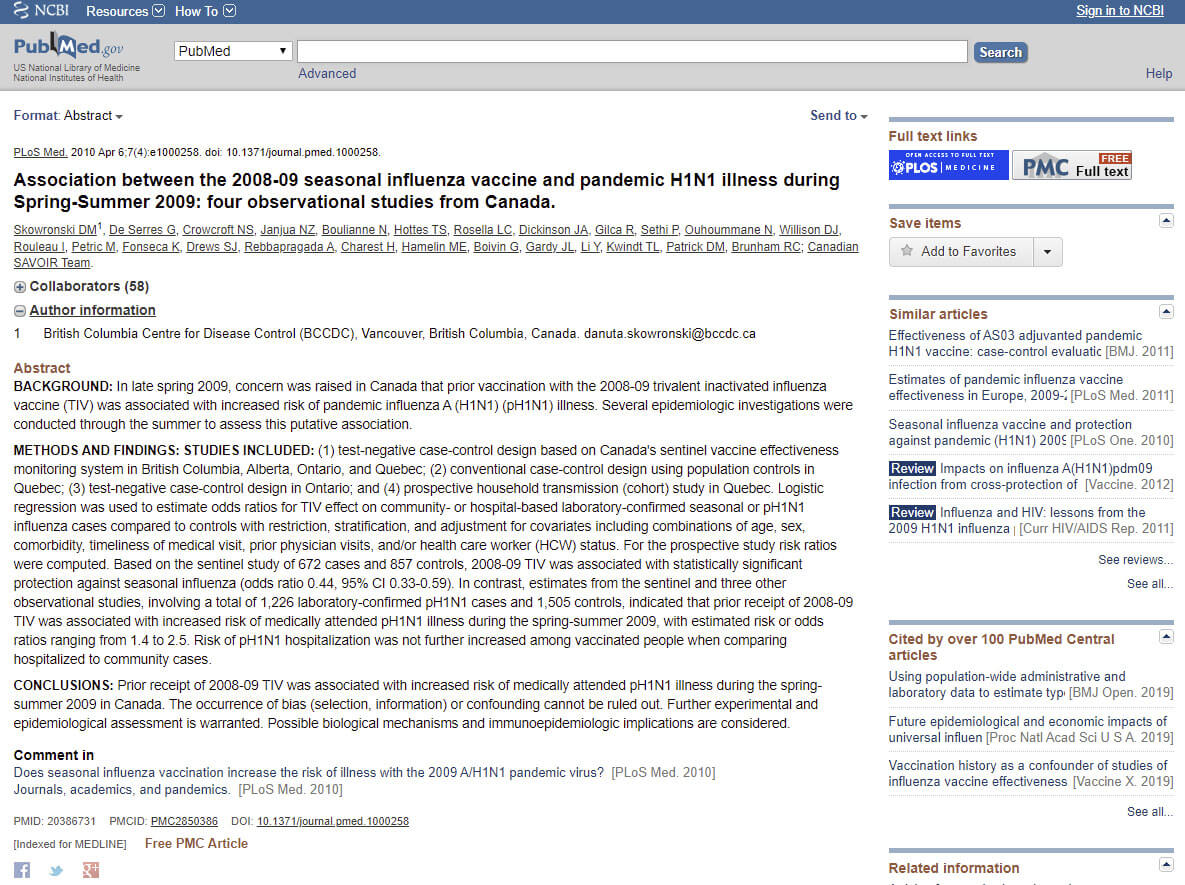
2019 VAERS Reporting Data:
A database called The Vaccine Adverse Event Reporting System (VAERS) is government funded and documents reported vaccine injuries and deaths. The challenge is that the system is underreported and is believed to account for less than 1% of vaccine related injuries and deaths! (29)
A September 2019 report by the Department of Justice shows that 65 out of 87 settlements were paid out due to damages associated with injury or death from the flu vaccine. This number only reflects petitioners who received an award of compensation.
Injuries include:
- Fibromyalgia
- Undifferentiated connective tissue disease
- Transverse myelitis
- Acute disseminated encephalomyelitis
- Bell’s palsy
- SIRVA (shoulder injury related to vaccine administration)
- Chronic inflammatory demyelinating polyneuropathy
The report indicates that the most frequent flu related complication is Guillain-Barré Syndrome (GBS) (30). You have to decide if the risk of contracting the flu this season is more serious than increasing your risk for GBS, other injuries, or even death (38). Remember, most people recover from influenza, develop immunity to the same or related strain, and do so without complication (37).
Natural Infection and Immunity:
Immunity and vaccination are improperly confused to be one of the same. Immunity can only be achieved one way: naturally.
The thought process behind the use of adjuvants in vaccines assumes that an antibody response to a pathogen adequately measures immunity. This is not true. Natural immunity, not vaccine-induced “immunity”, requires human contact with the pathogen, such as through repetitive exposure, or the contraction and recovery of an infection with the presence of a fever.
In the case of influenza, cross-protection occurs when a natural infection provides protection against other influenza stains including those that are more virulent (10). Vaccination does not provide this cross protection.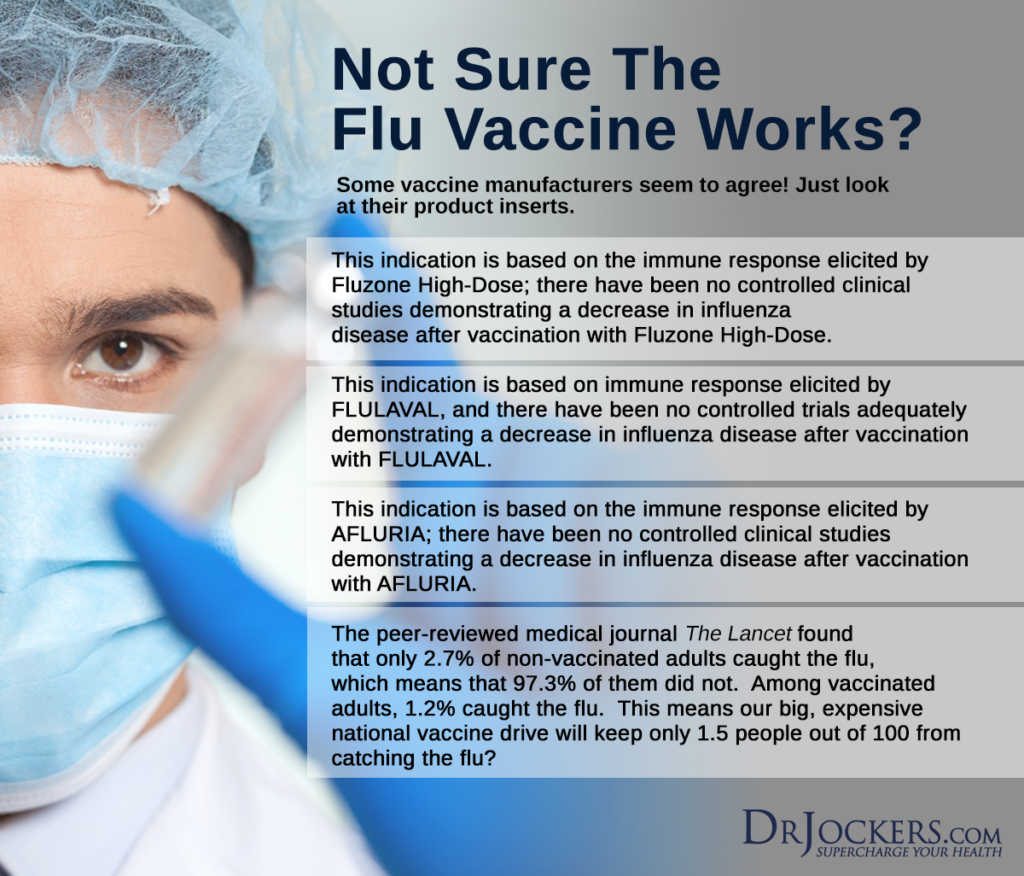
Natural, Safe, and Effective Ways to Defend Against the Flu:
Some of the side effects associated with the flu shot are no different than naturally getting sick from the influenza virus. To best prevent and treat the flu this year, consider the following natural and truly safe and effective ways to boost your immune defenses.
- Eat an anti-inflammatory diet that is low in sugar and refined vegetable oils and is full of high quality produce, organic and pasture-raised animal products, and healthy fats like avocados, olives and olive oil, and grass-fed butter.
- Prioritize sleep and keep stress under control. Don’t eat late at night and try to get to bed by 10 PM and sleep 7-9 hours each night. Keep your room dark and cool (65-70 degrees) and use an eye mask to block out any ambient light in the room so you can increase your melatonin levels and sleep deeper.
- Get adequate amounts of vitamins D3, A, and C.
Examples: Pasture raised eggs, grass-fed butter, wild caught salmon, bell peppers, lemons, and limes. - Consider a colloidal silver spray. Influenza viruses replicate in the respiratory system including the nose and the lining of the larynx. Spritz a spray or two in the back of your mouth when symptoms arise, such as a scratchy throat or a stuffy nose.
- Boost glutathione levels. This powerhouse antioxidant prevents oxidative damage and plays an important role in immune function.
Examples: Avocados and green tea. - Don’t forget the benefits of simple and healthy habits. Washing your hands is one of the best ways to prevent the spread of influenza.
- Get some sun! The influenza virus circulates year round. Fall and winter bring less time outdoors but your body relies on sunlight year round for physical and mental health.
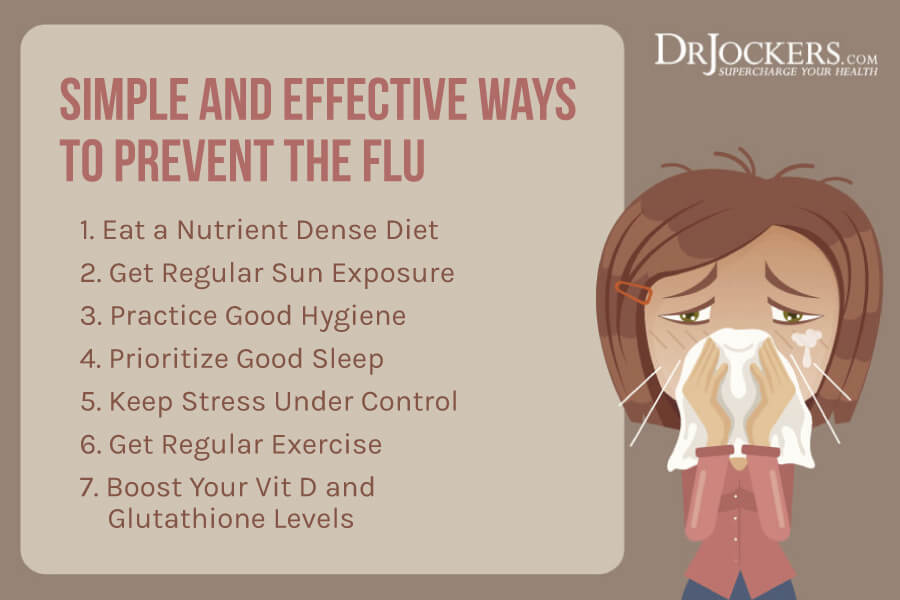
Summary:
Is there a link between vaccinations and cancer, autoimmune conditions, and poor health? The vaccine manufacturers are not committing to long term research studies. (31) The FDA is approving the use of carcinogenic agents and pathogens for use in vaccines oftentimes with only post-marketing surveillance recommendations.
A law passed in 1986 removed liability from vaccine manufacturers giving them immunity from any lawsuit due to injury or death resulting from vaccines (32). Pharmaceutical companies accumulate bit profit margins, beat out other leading profit industries such as gas and oil companies, and spend record amounts of funds on lobbying (33, 40).
Legislation for forced vaccination mandates are already occurring and more are on the horizon. It is essential to your health, the health of future generations, and your fundamental rights as a US citizen to become educated in the discussion of vaccines. Research, ask the hard questions, be brave, and have a conversation with your trusted doctor before you get a flu shot (39).
If you want to work with a functional health coach, I recommend this article with tips on how to find a great coach. On our website, we offer long-distance functional health coaching programs. For further support with your health goals, just reach out—our fantastic coaches are here to support your journey.
Inflammation Crushing Ebundle
The Inflammation Crushing Ebundle is designed to help you improve your brain, liver, immune system and discover the healing strategies, foods and recipes to burn fat, reduce inflammation and Thrive in Life!
As a doctor of natural medicine, I have spent the past 20 years studying the best healing strategies and worked with hundreds of coaching clients, helping them overcome chronic health conditions and optimize their overall health.
In our Inflammation Crushing Ebundle, I have put together my very best strategies to reduce inflammation and optimize your healing potential. Take a look at what you will get inside these valuable guides below!


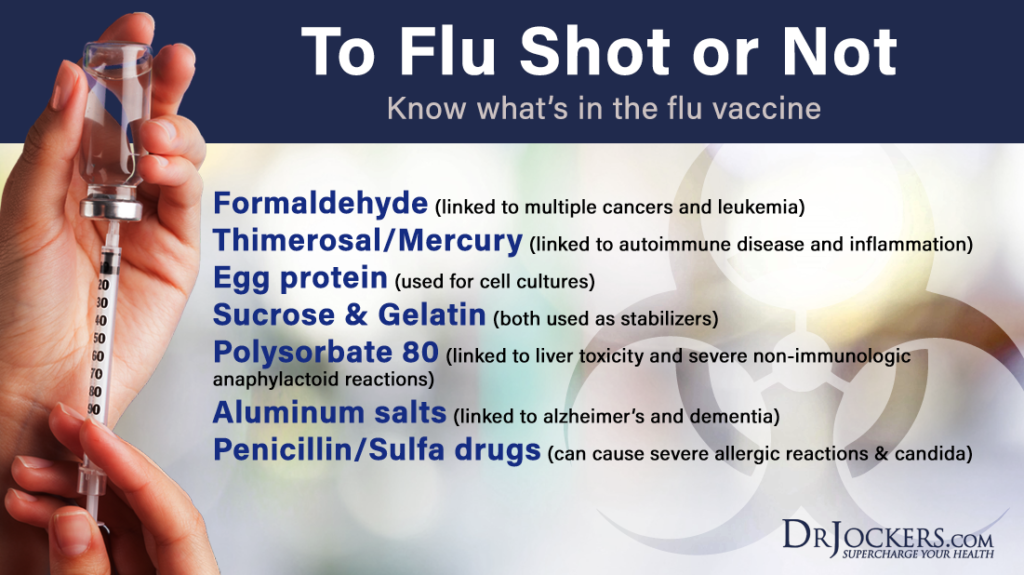





Thank you for this! I scoured your website for direction regarding vaccinations during my last pregnancy. I opted against them for both myself and my now 4 month old. I had a very happy healthy pregnancy and a smooth natural delivery by implementing a whole food lchf lifestyle. I want to thank you so much for sharing your knowledge with all of us. Your website is my go to for answers to my health questions. I am very excited about the new series.
So glad to hear you have a healthy baby and opted out of the vaccines! Look out for some future articles on this topic from us.
Hello,
Do you know where I can find the link to Dr. Fudenberg’s study?
Thanks.
Lori
Have there been any incidences of muscle weakness and pain? After the flu shot I awoke one AM with muscle weakness, stiffness, and pain in my hand, wrist, and upper arm. The following AM my other hand/arm had the same thing. My dr. said it was probably overuse, but I found it odd that it was sudden onset. It has been over a month and the symptoms have not gone away or lessened.
So sorry to hear about this Judith! Yes, this is common! I would recommend getting a consultation with a natural health doctor about this.
Hey Linda,
Thank you for your comment, I understand your concern. If you follow the link that breaks down the ingredients by vaccine you will see that some of them contain what is labeled as human diploid cells. These cells have historically been isolated from aborted fetal tissue. https://www.cdc.gov/vaccines/pubs/pinkbook/downloads/appendices/B/excipient-table-2.pdf
Blessings!
None of the flu vaccines on this contain human diploid cells….
Hi Kyle, I’m so sorry for the confusion. Yes, this was my mistake and I removed it from the article. Thank you for letting me know. We will be updating this article within the coming weeks!
Just so everyone knows. A vaccine formula does not have to have every ingredient listed. They are proprietary patents so are considered secret. Who knows how many things are in them that are not listed? ….
Hey Peggy, Thank you for sharing. Yes, sadly we often here that vaccines have other contaminants in the shot that are not listed. We hope to have this article updated before the end of the week with the most recent research.
I’m the fool! Sadly after taking a flu shot in 2019 I had heart problems within months! Then valve surgery replacement then diastolic heart failure then Parkinson’s then glaucoma! By chance, not how I feel! It’s been four years after seemingly perfect health I’m still asked to get the shot, I’m polite but that will never happen. Why is there so much indoctrination? Because doctors have been forced into the corporate world and of course by stock in the pharmaceuticals, why not invest, anybody can see it’s making a living. But the big clowns are killing us all the way to the bank!
Very sorry to hear about this! Praying for you and your family!